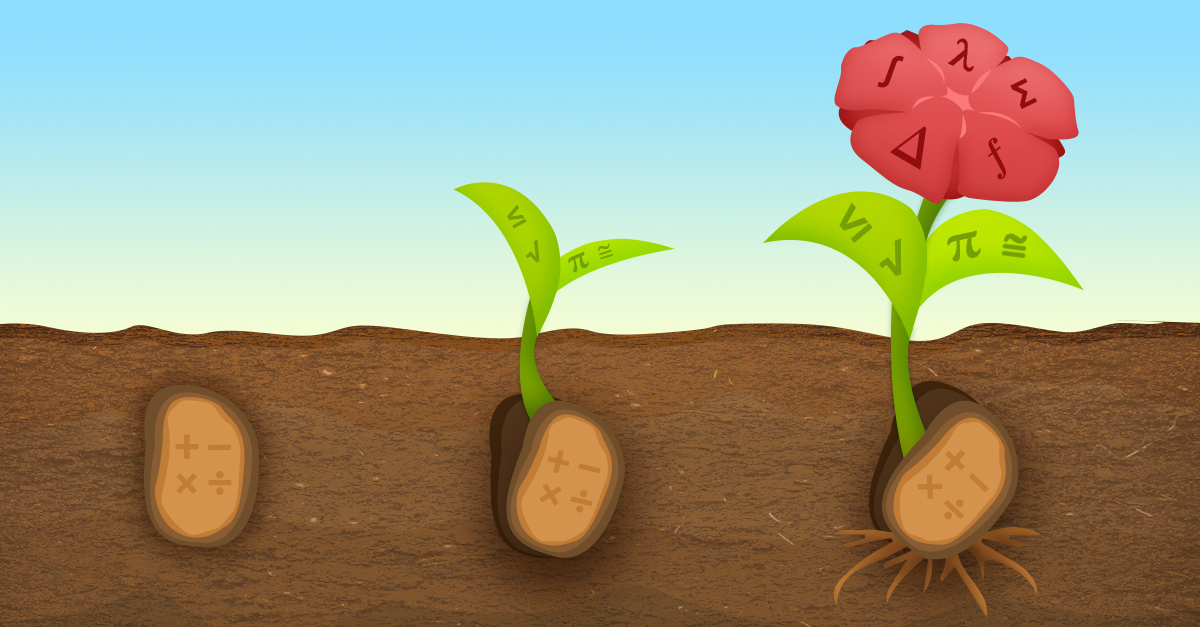What is the Sequence in Math?

Children tend to follow a developmental sequence in their learning as they grow and develop. As a very basic example, most children first begin to crawl (while some may scoot), which is then followed by learning to walk, run, skip, and jump, with increased speed and agility over time. As children gain more experience and practice with these skills, they may find some more challenging to master or that they excel in one particular area. Similarly, children follow developmental learning progressions in their mathematical thinking, constructing meaning in their own way with foundational concepts and applying and extending them to more complex ideas at their own pace. So, is there a sequence to helping students develop mathematical thinking skills?
Are All Math Skills Sequential?
Some math skills must obviously develop sequentially. A student cannot begin to add numbers until he knows that those numbers represent quantities. Mathematics encompasses a wide variety of skills and concepts. Although these skills and concepts are related and often build on one another, it is possible to meet with success with some and have difficulty with others. For instance, a student may struggle with basic computation but finds he excels in geometry or with logic concepts. We can help our students develop a deeper and more comprehensive understanding of mathematics if we think of the subject in terms of clusters of concepts and skills, rather than a strictly linear progression.
Developing Sequence Early On
As early as prekindergarten through grade 2, children begin to develop beliefs about what mathematics is and what it means to understand and to “do” math. Keeping students actively engaged, demonstrating enthusiasm, and using activities that encourage curiosity will help set a positive tone for learning math. At this early level, students should develop a solid understanding of the number system, including place value. Students should begin to count aloud; recognize the number of objects in a group; follow a sequence of two- and three-step commands; understand relative size and sort objects by size and shape; perform addition and subtraction computations efficiently, and respond accurately to mathematical signs. Instruction should also encourage exploration and understanding of patterns and measurement concepts and begin to learn the concepts of time, money, and basic graphing.
Building on their inquisitive nature, children in grades 3 through 5 should be encouraged to investigate and solve real-world problems. Instruction should include problem-solving in which students have the opportunity to explain how they arrived at a solution and to consider more than one way of solving a problem. Students should be able to recall basic math facts with ease and demonstrate the relationship between processes such as addition and multiplication and subtraction and division. Students should also begin to work flexibly with the concepts, strategies, and representations of multiplication (and division), equivalence, and estimating quantities; use a variety of methods for computation, and analyze data. In addition, developing competency with fractions, decimals, and percentages will prepare them for middle school mathematics.
By the time students reach grades 6 through 8, they are forming opinions about their mathematical abilities, interest, and motivation that will influence how they approach mathematics during their high school years. Instruction at this level should build upon their strong foundation of basic skills and strengthen their emerging capabilities to think critically, comprehend cause and effect, and demonstrate their reasoning in both concrete and abstract representations. The foundational concepts of algebra and geometry can be integrated into instruction to accomplish these goals. Students should perceive relationships and make conversions among fractions, decimals, and percentages. In addition, they should be able to use and apply a wide array of equations and formulae, use calculators (and computers) with ease, and self-monitor their thinking during multi-step problem solving, as well as summarize and describe data distributions.
Remember: Each Student Is Different
Keep in mind that every student is different, especially when it comes to being ready for upper-level mathematics. Some students may be ready for an algebra course as early as seventh grade, while for other students it is beneficial to wait until early high school. No matter where a student is on the math continuum, students who are ready for an algebra course not only demonstrate a strong command of basic computation but also exhibit a level of “mathematical maturity” that includes a desire and readiness to understand abstract mathematical definitions; to work with abstract models, symbols, and representations; and to recognize and make connections among mathematical structures. The course and skill progression from this point would be determined by the student’s academic goals and projected career path.
Math is a learning progression of concepts and skills that build upon one another. It begins with fundamental concepts such as counting, addition, and subtraction and gradually builds and expands toward an understanding of more complicated ideas such as geometric theorems and factoring polynomials. We know that students who don’t have a strong base will inevitably encounter difficulty at some point. It’s important to help students remember what concepts they still can improve upon. We can promote students’ mathematical thinking and reasoning abilities through developmentally appropriate instruction and activities. Over time they will eventually “run” with those concepts and organize them into broader mathematical structures, becoming lifelong learners who enjoy and are proficient in math.
We Are Here to Help
If you have questions about teaching math, we are here to help!
Get in Touch